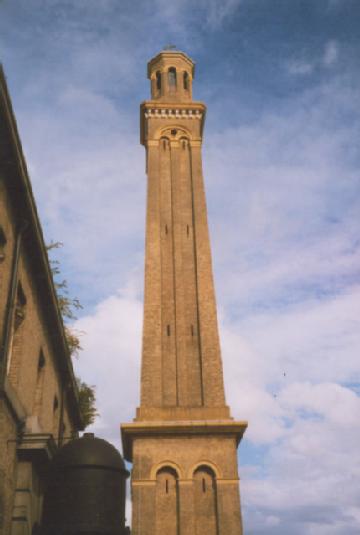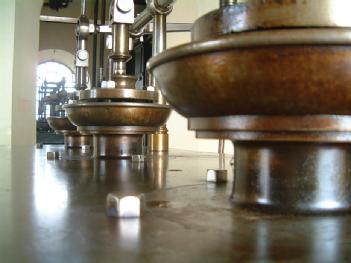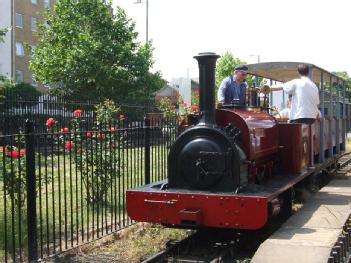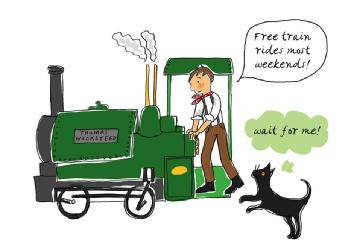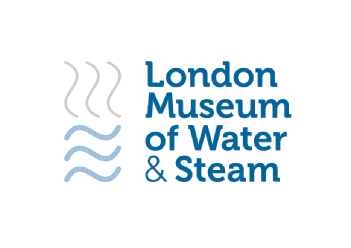
    |
London Museum of Water and Steam |
TW8 0EN Brentford, London, Great Britain (UK) (Greater London) |
|
| Address |
Green Dragon Lane
|
| Floor area | unfortunately not known yet |
Steam engines/generators/pumps
- Passenger cars
- Model Railway
- Fire Brigade
- Steam engines-models
- Combustion engines/generators/pumps
- Mine- & Parc Railways
- Historic Engineering Landmarks
|
Opening times
|
Monday to Friday 11:00 - 16:00; Sat & Sun 11:00 - 16:00
|
||||||||
|
Status from 06/2015
|
Adult 11,50: £; Concession 10 £; Child Aged 5-15: 5 £; Family Ticket: 1+2 16,50 £; Family Ticket: 2+2 28,00 £ |
||||||||
| Contact |
|
||||||||
| Homepage | www.waterandsteam.org.uk | ||||||||
| Location / Directions |
The Museum is located just on the north side of Kew Bridge, under the tall Victorian Stand Pipe Tower. Directions:From the south of Kew Bridge, go over the bridge, then immediately turn left towards Brentford. The Museum is about 100 yards along on the right hand side, on the corner of Green Dragon Lane and Kew Bridge Road. The museum entrance is in Green Dragon Lane.From the M4 motorway, leave the motorway at Junction 2 and follow the A4 to Chiswick roundabout. Take the turning towards Richmond, Kew Bridge and Brentford (also signed for Kew Gardens). Go straight ahead at the next set of traffic lights, then move into the right hand lane to go straight ahead at the next set of lights, following signs to Brentford. The Museum is about 100 yards along on the right hand side, on the corner of Green Dragon Lane and Kew Bridge Road. The museum entrance is in Green Dragon Lane. Public Transport:Buses: 65, 237, 267, 391. All buses stop at Kew Bridge.Main Line Rail: Kew Bridge (South West Trains from Waterloo via Clapham Junction). Tube: Gunnersbury (District Line then 237 or 267 bus) or Kew Gardens (District Line then 391 bus), South Ealing (Piccadilly Line then 65 bus to Kew Bridge) 3 minutes walk from Kew Bridge Station. |
| Description | OverviewCome and discover the story of London’s water supply and witness stationary steam pumping engines in action. Steam Pumping Engines at Kew BridgeThe heart of the museum is its collection of magnificent steam pumping engines. These comprise the Cornish engines, which are in their original engine houses, and the rotative engines, which have been collected by the museum trust from pumping stations across the country. Together the collection demonstrates the major developments in steam engine technology. In addition to these engines, we have also collected examples of diesel, electric, water and animal powered pumping engines. The Cornish EnginesThe term "Cornish" refers to the operating cycle of these engines, although three in the museum collection were also manufactured in Cornwall. The main characteristic of a Cornish engine is that pumping is done by a falling weight which is lifted by the engine. This weight is positioned above the pump, which is linked to a beam, with the piston attached to the opposite end of this beam. The weight is lifted by a combination of steam pressure above, and vacuum below, the piston. During the pumping stroke, as the weight falls, the piston returns to the top of the cylinder because an equilibrium valve opens to allow steam to pass from above to below the piston. The speed of movement varies during the cycle, making a Cornish engine both exciting to watch and to drive. The museum has the largest collection of Cornish engines in the world, including the world's largest working single cylinder steam engine and the only complete in-situ Bull engine. The Rotative EnginesIn the Steam Hall there are four large rotative steam pumping engines plus a number of smaller ancilliary engines. In the rotative engine the linear motion of the piston is converted into rotary motion by the crank. The use of both cranks and large flywheels balance out the varying thrusts and loads, thus allowing the engines to operate steadily and smoothly. Engines* 90 inch Engine (1846) The museum also operates an 1860 Shand Mason Fire Engine on selected event days Railway The museum runs a 2 ft (610 mm) narrow-gauge railway which in 2009 saw the introduction of a new-build Wren Class steam locomotive, Thomas Wicksteed. The railway had previously been operated by visiting loan locomotives. The line runs for 400 yards around the Kew Bridge site, and passenger trains are operated at weekends and on other special event days. |
[dsp_museum_detail.cfm]
| Data Compliance | More Information |
 waterandsteam.org.uk
waterandsteam.org.uk 